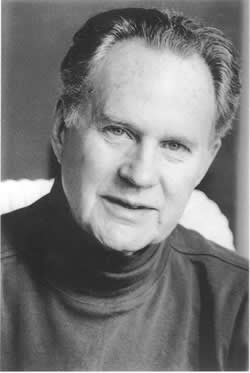
Here's what I read in 2010:
1.
The Church of Our Fathers by Roland Bainton
Completed January 8, 2010
2.
The Dead Zone by Stephen King
Completed: January 16, 2010
3.
The Sign of Jonas by Thomas Merton
Completed: January, 2010
4.
Marginal Catholics by Ivan Clutterbuck
Completed: February, 2010
5.
The Second Coming by Walker Percy
Completed: February, 2010
6.
Walker Percy: The Last Catholic Novelist by Kieran Quinlan
Completed: February, 2010
7.
Science Fiction The 100 Best Novels: An English Language Selection: 1949 - 1984 by David Pringle
Completed: February 27, 2010
8.
Isaac Asimov: A Life of the Grand Master of Science Fiction by Michael White
Competed: February 27, 2010
9.
99 Novels: The Best in English Since 1939, A Personal Choice by Anthony Burgess
Completed: March 5, 2010
10.
The Gargoyle Code: Lenten Letters Between a Master Tempter and His Diabolical Trainee by Dwight Longenecker
Completed: March 6, 2010
12.
Goodbye, Good Men: How Liberals Brought Corruption into the Catholic Church by Michael S. Rose
Completed: March 8, 2010
13.
The Chosen by Chaim Potok
Completed: March 19, 2010
14.
The Light Invisible by Robert Hugh Benson
Completed: March 20, 2010
15.
The Age of Consent: The Rise of Relativism and the Corruption of Popular Culture by Robert H. Knight
Completed: March 21, 2010
16.
I Alone Have Escaped To Tell You: My Life and Pastimes by Ralph McInerny
Completed: March 27, 2010
17.
What Went Wrong With Vatican II: The Catholic Crisis Explained by Ralph McInerny
Completed: March 29, 2010
18.
How Far Can You Go by David Lodge
Completed: April, 2010
19.
Judith’s Marriage by Bryan Houghton
Completed: April, 2010
20.
The Faithful Departed: The Collapse of Boston’s Catholic Culture by Philip F. Lawler
Completed: April 16, 2010
21.
84 Charing Cross Road by Helene Hanff
Completed: April 17, 2010
22.
Q’s Legacy by Helene Hanff
Completed: April 24, 2010
23.
A Short History of the Mass by Alfred McBride
Completed: April 24, 2010
24.
Teacha: Stories From a Yeshiva by Gerry Albarelli
Completed: April 24, 2010
25.
Voodoo & Hoodoo by Jim Haskins
Completed: May 3, 2010
26.
The Cardinal by Henry Morton Robinson
Completed: May 15, 2010
27.
The Executioner Always Chops Twice: Ghastly Blunders On the Scaffold by Geoffrey Abbott
Completed: May, 2010
28.
Questions and Answers About Your Journey To God by Benedict J. Groeschel, C.F.R.
Completed: June 1, 2010
29.
The Heart of the Matter by Graham Greene
Completed: June 5, 2010
30.
The Violent Bear It Away by Flannery O’Connor
Completed: June, 2010
31.
Tudor England by S.T. Bindoff
Completed: June, 2010
32.
The Abbess of Andulusia: Flannery O’Connor’s Spiritual Journey by Lorraine V. Murray
Completed: July, 2010
33.
The Loser Letters: A Comic Tale of Life, Death, and Atheism by Mary Eberstadt
Completed: July, 2010
34.
Losing Our Religion: The Liberal Media’s Attack on Christianity by S.E. Cupp
Completed: July, 2010
35.
A People’s History of Christianity: The Other Side of the Story by Diana Butler Bass
Completed: July 20, 2010
36.
Sir William Blackstone and the Common Law: Blackstone’s Legacy to America by Robert D. Stacey
Completed: July 29, 2010
37.
Orthodoxy and the Religion of the Future by Fr. Seraphim Rose
Completed: August 5, 2010
38.
The Last Night of a Damned Soul by Slimane Benaissa
Completed: August 14, 2010
39.
Understanding Flannery O’Connor by Margaret Earley Whitt
Completed: August 18, 2010
40.
Heathen Valley by Romulus Linney
Completed: August, 2010
41.
Brighton Rock by Graham Greene
Completed: August 26, 2010
42.
A Study in Greene: Graham Greene and the Art of the Novel by Bernard Bergonzi
Completed: August 29, 2010
43.
The Celestial Bed by Irving Wallace
Completed: August 31, 2010
44.
The End of the Affair by Graham Greene
Completed: September, 2010
45.
The Third Woman: The Secret Passion that inspired Graham Greene’s The End of the Affair by William Cash, Completed: September, 2010
46.
Ugly As Sin: Why They Changed Our Churches from Sacred Places to Meeting Spaces - and How We Can Change Them Back Again by Michael S. Rose
Completed: September 26, 2010
48.
Last Rites: The Death of the Church of England by Michael Hampson
Completed: October, 2010
49.
The Trouble With Islam: A Muslim’s Call for Reform in Her Faith by Irshad Manji
Completed: October 11, 2010
50.
A Bitter Trial: Evelyn Waugh and John Carmel Cardinal Heenan on the Liturgical Changes Edited by Scott M.P. Reid
Completed: October 12, 2010
51.
Liturgical Time Bombs In Vatican II: The Destruction of Catholic Faith Through Changes in Catholic Worship by Michael Davies
Completed: October 16, 2010
52.
Purity: Sex, Marriage & God by Johann Christoph Arnold
Completed: October, 2010
53.
The Red Hat by Ralph McInerny
Completed: October 24, 2010
54.
After This Life: What Catholics Believe About What Happens Next by Father Benedict J. Groeschel
Completed: October 31, 2010
55.
The Catholic Church and American Culture: Why the Claims of Dan Brown Strike
a Chord by Eric Plumer
Completed: November 7, 2010
56.
If I Forget Thee, Jerusalem by William Faulkner
Completed: November 12, 2010
57.
Vile Bodies by Evelyn Waugh
Completed: November 20, 2010
58.
The Man Within by Graham Greene
Completed: November 22, 2010
59.
Labels: A Mediterranean Journey by Evelyn Waugh
Completed: November 27, 2010
60.
Striptease by Carl Hiaasen
Completed: December, 2010
61.
Sexual Authenticity: An Intimate Reflection on Homosexuality and Catholicism by Melinda Selmys
Completed: December 4, 2010
62.
Tourist Season by Carl Hiaasen
Completed: December, 2010
63.
The Rebbe, the Messiah, and the Scandal of Orthodox Indifference by David Berger
Completed: December 21, 2010
64.
In Search of the New Testament Church: The Baptist Story by C. Douglas Weaver
Completed: December 27, 2010
65.
Patience With God: Faith for People Who Don’t Like Religion (or Atheism) by Frank Schaeffer
Completed: December 29, 2010
66.
Justifiable Homicide: Growing Up a Baptist Christian Fundamentalist by Dean H. Auginbaugh
Completed: December 31, 2010









































